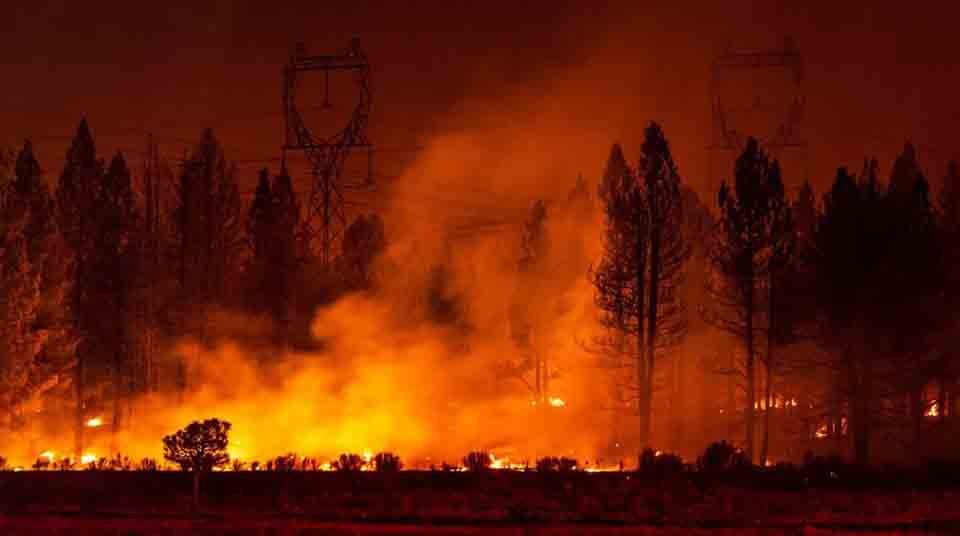Oregon Homeowners Face Tax Increases for Fire Protection

Oregon homeowners will face onerous increases in fire protection taxes if proposals by two Democrat Senators receive approval in the upcoming Legislative Session.
UPDATE: Oregon Wildfire Survivors Will Not Be Taxed
Meanwhile, Senate President Rob Wagner, D-Lake Oswego, describes wildfire funding as a challenge and says he is open to hearing proposals from everyone to resolve the problem.
The Public Must foot a Larger Proportion of the Fire Protection Fund
Protagonists of the proposal that the public foots a larger share of the fire protection bill are Senators Elizabeth Steiner, D-Portland and Rep. Paul Evans, D-Monmouth. They both want the public to pay more, while Steiner also hopes to reduce costs for the timber industry.
Rejecting their proposal are two of their Democrat colleagues, Sen. Jeff Golden, D-Ashland, and Rep. Paul Holvey, D-Eugene. They believe the timber industry has contributed too little for too long. They want to see them pay more for fire protection.
What Increased Taxes Homeowners Could Face
Steiner recently convened a workgroup to draft a proposal to cut fees for timber landowners and ranchers across the state and impose a $10 fee on property owners to raise an additional $20 million annually to fight wildfires. Steiner later dropped the $10 charge. The Portland Senator also wants a cutback on the per-acre fees of $5 paid by timber companies.
Colleague Evans wants to introduce a wildfire levy of 25 cents for every $1,000 of the assessed value of privately owned property. Steiner supports this idea that will generate $125 million in new funding.
Evans believes that wildfires are everyone’s problem. For this reason, everyone should contribute to the fund. He feels this is the fairest way for all Oregonians to contribute to wildfire prevention, preparedness, and effective response.
The proposal is that $25 million of the new funding be used statewide for wildfire protection measures, with the balance of $100 million allocated to regional priorities such as home and community wildfire prevention and the training of certified firefighters in rural areas.
Evans hopes his suggestions will safeguard communities and stop the ever-rising cost of home insurance.
The Timber Industry, Not Homeowners, Must Pay
On the opposite side of the spectrum are Sen. Jeff Golden, D-Ashland, and Rep. Paul Holvey, D-Eugene, who want to see the timber industry pay more for wildfire funding in the state.
They will ask the Legislature to reinstate a 30-year defunct severance tax on the value of harvested wood from industrial woodlands. The two senators will ask for a 6% contribution from individuals or companies who own 5,000 acres or more that will raise millions of dollars annually for state and local agencies. The additional funds will pay for home hardening, building code upgrades, boosting community fire response, and protecting landscapes from wildfires.
Golden points out that companies owning timberlands protected by the Oregon Department of Forestry (ODF) already enjoy substantial tax advantages. He does not want to see Oregonians asked to pay more until addressing the timber industry.
Homeowner Wildfire Protection Slashed
The Oregon wildfire budget heavily pruned from $35 million in 2021 to a paltry $3 million in 2023. The funds were used for landscaping and metal roofs to fight neighborhood wildfires. This investment can hopefully slow down rocketing insurance premiums paid by Oregonians since the Labor Day fires of 2020 were the state’s most costly natural disaster.
After the Labor Day fires, the Legislature allocated $220 million to the ODF and the State Fire Marshal’s Office for wildfire protection. Two years later, the record-breaking allocation dwindled to a mere $87 million.
In various areas of Oregon, like Sisters and the Bend, where the risk of wildfire is high, homeowner insurance is no longer available. Brokers confirm that new policies and renewing existing policies are no longer happening in various parts of the state.
How Wildfire Protection is Funded
The cost of protecting Oregon from wildfire is shared by state taxpayers and ranch and timber landowners who pay per-acre fees to the ODF for protection.
Privately owned industrial forests comprise 33% of the 16 million acres the ODF protects from wildfire, says Joy Krawczyk, the ODF’s public information officer. Less than one-quarter of the land protected by the department is public-owned.
Comparative Protection Costs
With 2018 as an example, timber companies in Washington were taxed close to $9 per acre of private forestland and $23.50 per million board feet of wood harvested. By comparison, Oregon timber companies paid about $5 per acre of private forestland and about $12 per million board feet of wood. These figures are from an analysis by the Legislative Revenue Office.
Three years later, when Oregon received record wildfire funding, ranch and timber landowners did not have to pay higher per-acre fees commensurate with rising fire costs because taxpayers footed the balance of the firefighting bill.
Today, however, a lion’s share of the state’s general fund is required for pressing issues such as affordable housing, substance abuse programs, and mental health issues among the younger generation. This reality puts the onus back onto timber and ranch landowners to pay more for wildfire-fighting protection services.
